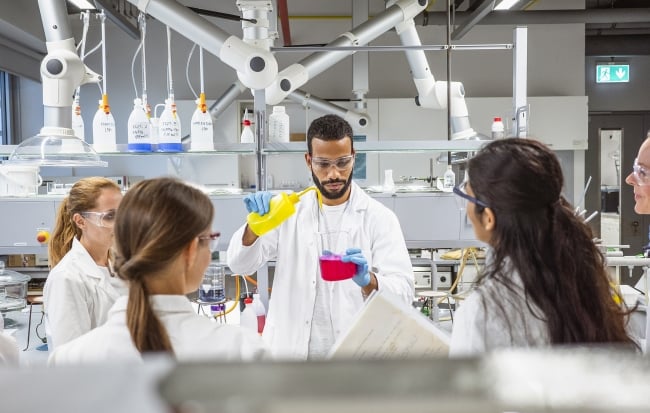You have /5 articles left.
Sign up for a free account or log in.

Grant funding aims to improve racial and gender diversity among STEM learners and the workforce.
sanjeri/E+/Getty Images
STEM programs in higher education are known to be challenging, with students needing to engage in high-level mathematics, writing and comprehension of the sciences. Student completion in STEM disciplines, research has shown, continues to be unequally distributed among racial groups, with Black and Latino youth who begin college in STEM majors being more likely to leave their programs before graduating than their white peers.
To encourage students from underrepresented minority backgrounds to pursue careers in STEM, colleges and outside partners are investing in programs that provide support and education to learners and practitioners.
By the Numbers
In 2021, among adults aged 18 to 74, women made up around 35 percent of people employed in STEM occupations but half (51 percent) of the total U.S. population, according to data from the National Science Foundation.
Across the STEM workforce in 2021, 15 percent of workers were Hispanic, 10 percent were Asian, 9 percent were Black and fewer than 1 percent were American Indians and Alaska Natives.
In 2020, white and Asian STEM workers had higher earnings than Hispanic, Black and American Indian or Alaska Native workers.
STEM workers with a disability are also more likely to be underemployed and undereducated than their peers without disabilities. In 2021, 65 percent of STEM workers with a disability held less than a bachelor’s degree, and 28 percent of part-time workers wanted a full-time role (compared to 15 percent of part-time workers without a disability).
University of Texas at San Antonio—Addressing Bias in Engineering
Two researchers from the University of Texas at San Antonio received a five-year, $3.6 million grant from the National Science Foundation to break down language barriers in engineering education.
Joel Alejandro Mejia and M. Sidury Christiansen are co-authoring a project that will establish a handbook of pedagogical approaches to address exclusionary language and linguistic practices in engineering courses at a Hispanic-serving institutions.
The handbook will be available in a digital format, offering recommended teaching practices that highlight the inaccessibility of language for Latino students studying engineering. Further findings will be disseminated through a social media campaign, seminars, workshops and conference presentations, according to the grant abstract.
University of Nevada at Reno—Supporting Students With Disabilities in STEM
UNR’s Nevada Center for Excellence in Disabilities received a five-year, $200,000 grant from the NSF in March 2023 to establish a mentoring program for disabled students in STEM.
A seven-student peer group leads efforts to highlight, empower and advocate for students with disabilities and mentor lower-level students through the challenges of studying STEM.
UNR students will be involved in nationwide research projects throughout the grant period to raise awareness about disabilities using photovoice, a type of ethnographic research methodology.
Salem Academy and College—Soar With Salem
Salem Academy and College in Winston-Salem, N.C., is one of seven women’s colleges that received grant funding from NASA to help women overcome obstacles to working in STEM. The college’s program, Soar With Salem: A Comprehensive Program to Inspire Women and Girls to Become the Next Generation of STEM Professionals, is a three-year program that spans from high school to college.
Salem’s program will cultivate women’s resilience, engagement with science and academic preparation in math, writing and the sciences to increase their likelihood of obtaining a degree in STEM. The college will host a summer program for high schoolers, pair students with peer mentors and encourage incoming students to choose a STEM program.
Other women’s colleges that received NASA funding include Agnes Scott College, Alverno College, Cedar Crest College, the College of Saint Mary, Simmons University and Smith College.
If your student success program has a unique feature or twist, we’d like to know about it. Click here to submit.




